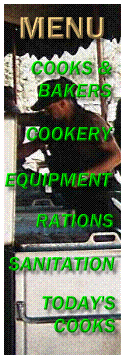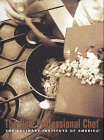
Complains of Poor Bread in A.E.F
Cooks
Admonished to Use Care (and Sharp Knives) when Cutting
Bread
Excerpted from Bulletin No. 21, issued by the General Headquarters, American Expeditionary Forces on April 29, 1918
The motive behind this memorandum puzzles me since investigators from the Army's Sanitary Corps later found many problems with the way bread was being baked and shipped in the A.E.F. One of the most glaring problems was the enormous size of the loaf. Bakers scaled the dough at 13-1/2 pounds, which yielded a 12-pound loaf after 24 hours.
Bread is now being baked in ten-pound loaves [Ed. note: other sources say 12-pound] for shipment to all troops supplied from our bakeries through the Regulating Stations. Similar loaves are being successfully baked by all field bakeries in the United States as a matter of economy and to increase the capacity of each oven in the field.
Complaints have been made that this bread, upon being cut, crumbles and falls to pieces. This is frequently due to bad handling in the organizations. Often dull knives are used, and the knives are pressed down and forced through the bread without a sawing motion, and such action naturally breaks the bread or mashes it. Sharp knives and a sawing motion only should be used.
It is easy to find fault with bread and not recognize the faults due to bad handling, and it is a well-known fact that bread is a delicate substance at best and is often abused.
This new loaf, being about 12 inches wide and about 24 inches long, should be cut in half, through the long dimension, so as to leave the halves about 24 inches long and about 6 inches wide, and of the same thickness which the loaf had when baked. After the loaf is thus divided it should be turned up on edge, with the edge made by the first cutting operation flat on the table. Then slice by using the sawing motion, cutting the slices from the top edge, through the loaf, to the table.
Care in cutting, if the cutting is done as directed, will prevent any material waste.
Return to Bread Baking in World War I Army
October 1999
| Bulletin Board | Keyword Search |
| Bookstore | Links |
| About Us | Recent Additions |

